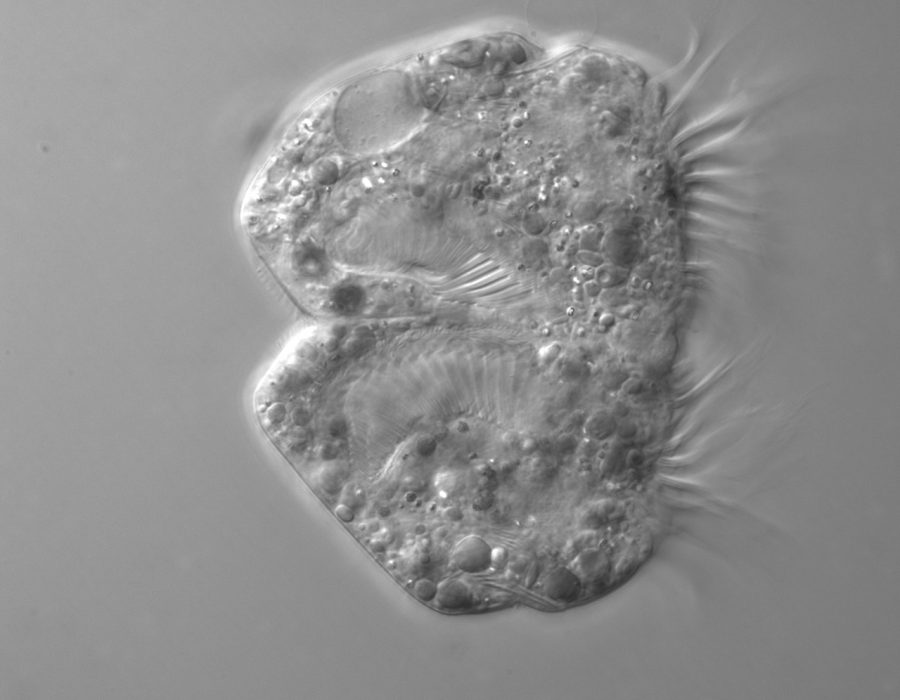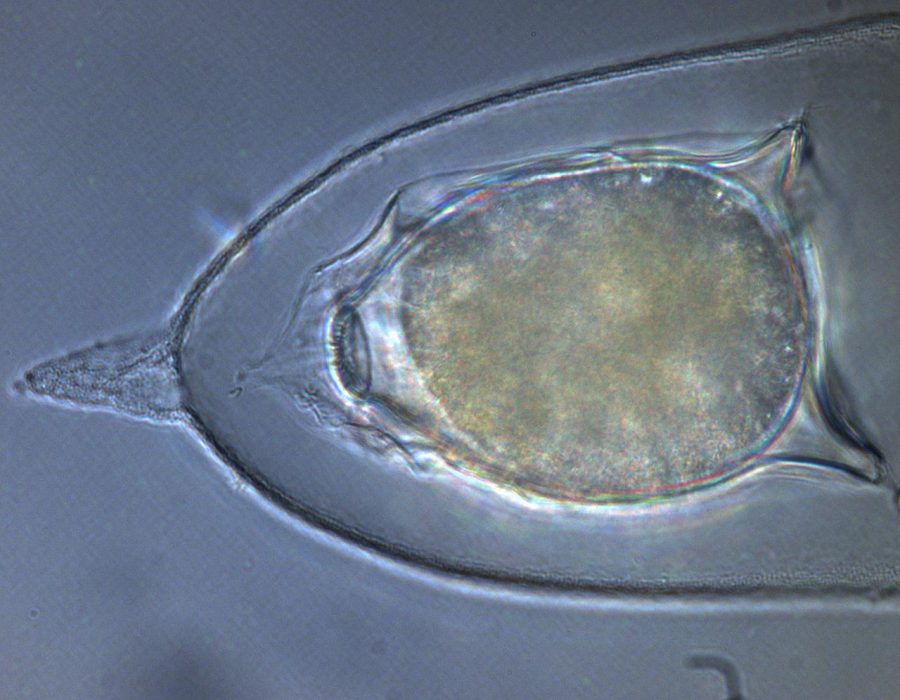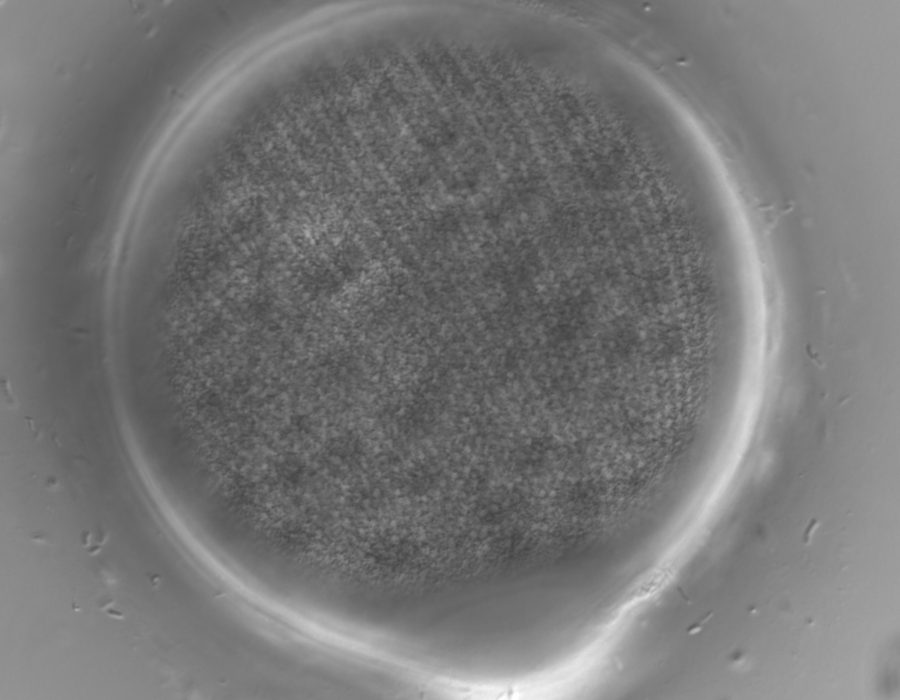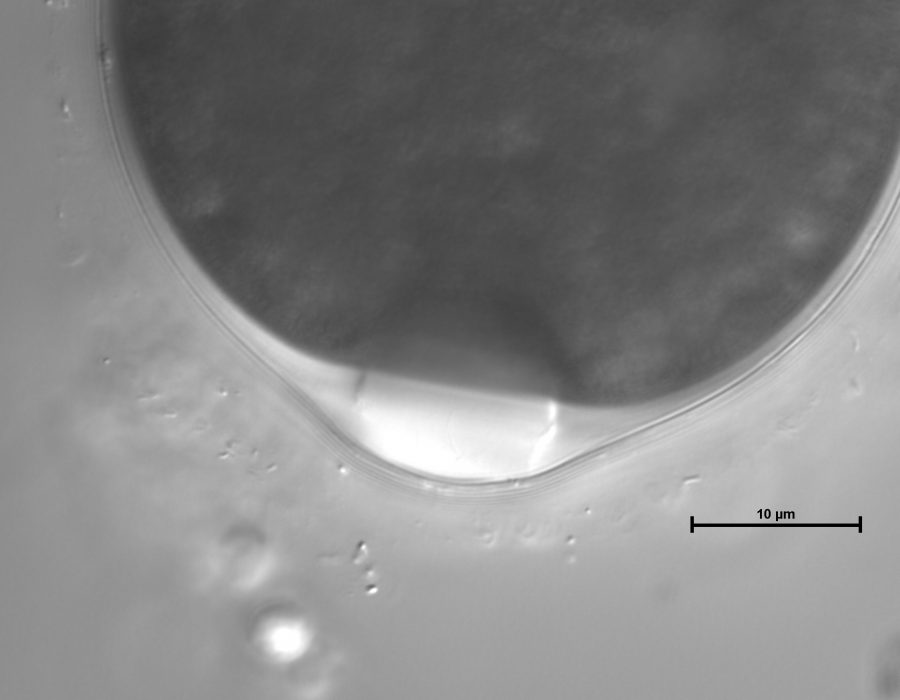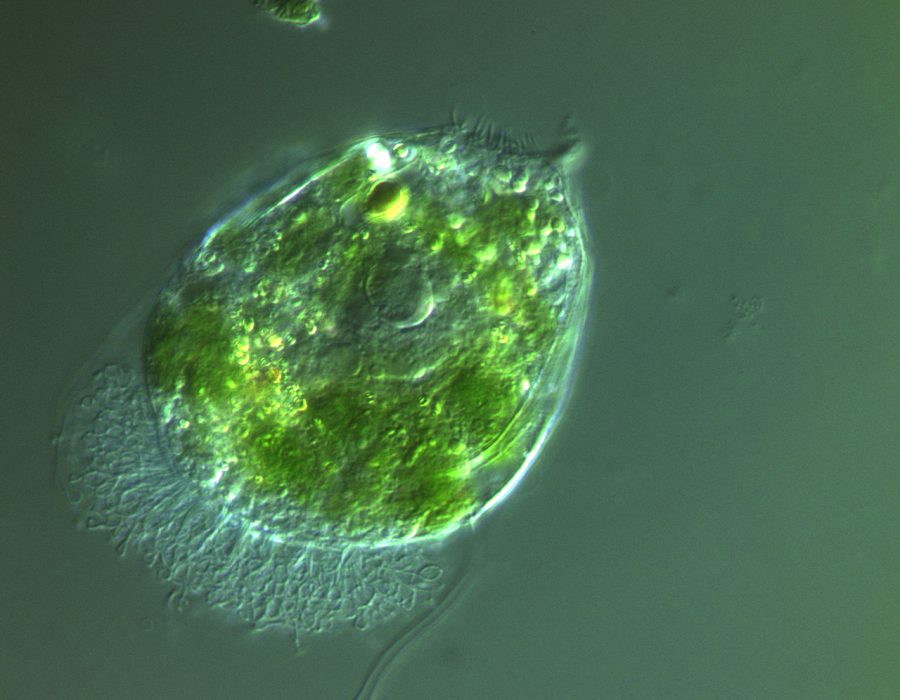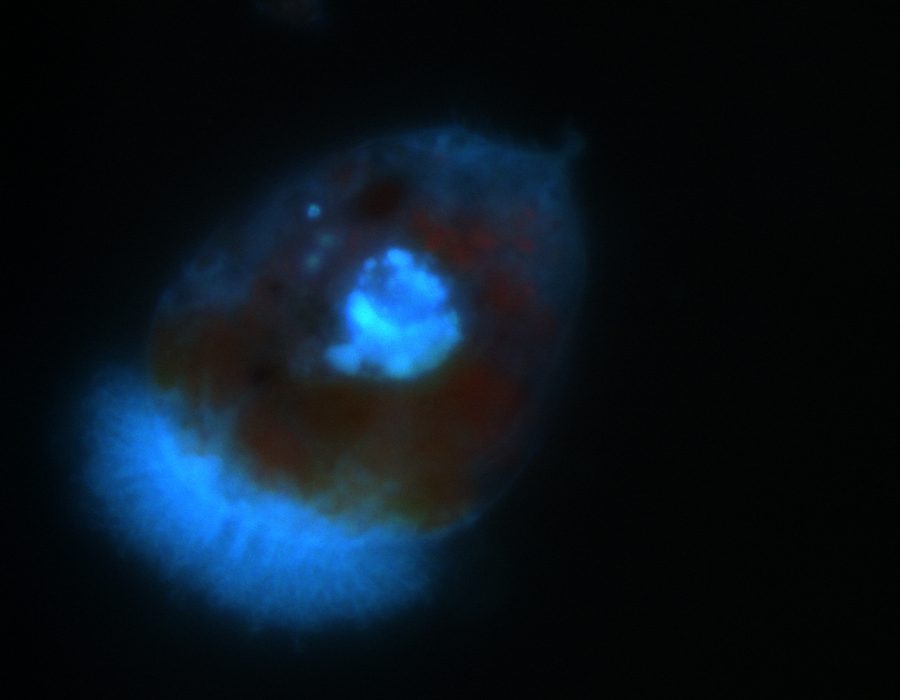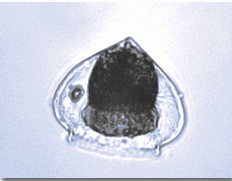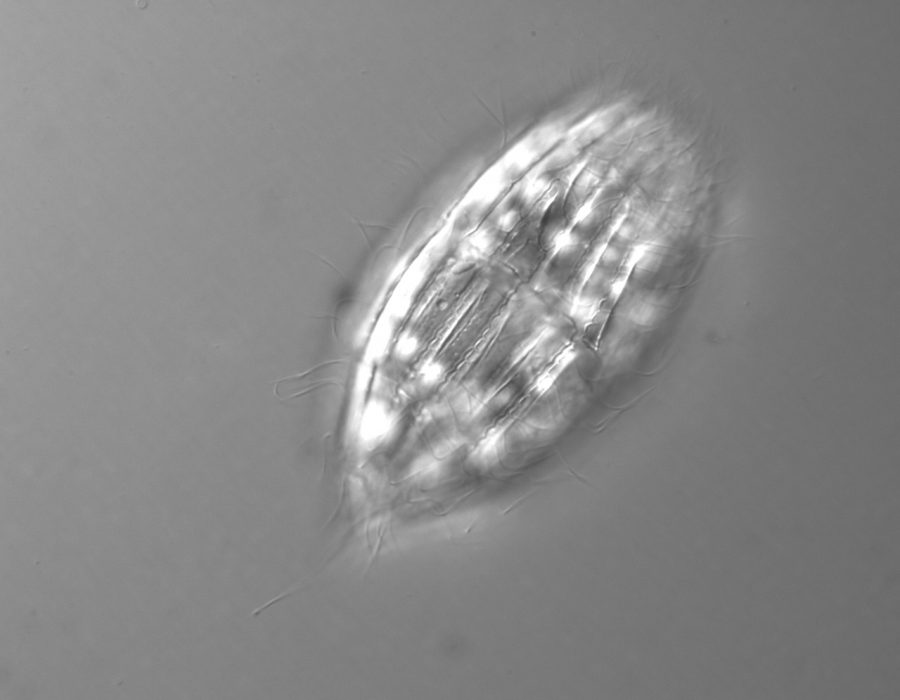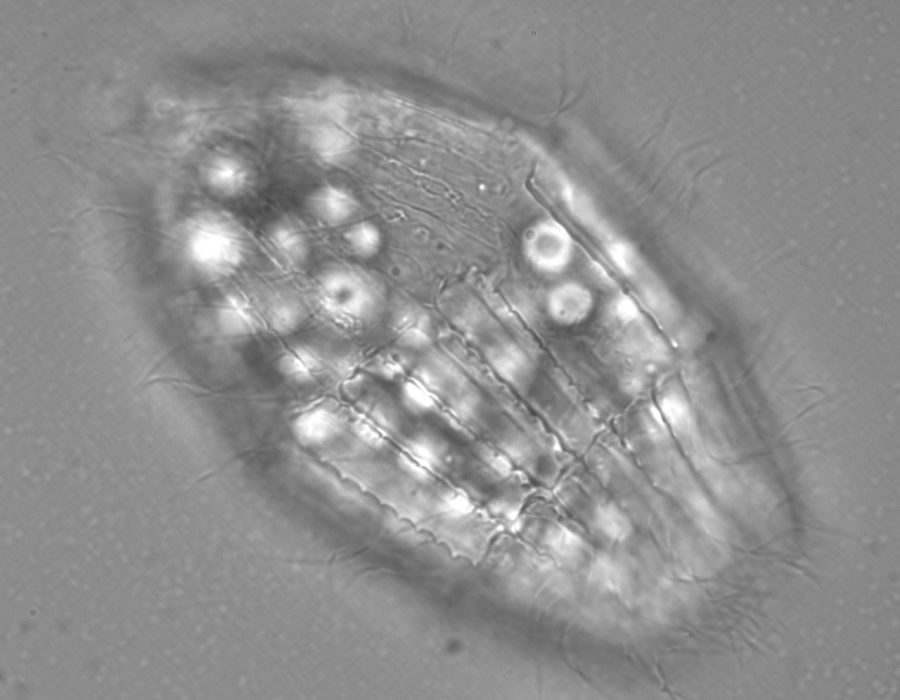Here are some images and videos of our work:
| The ciliate Strombidium oculatum feeding on Ulva sp. zoospores | https://youtu.be/DnaCqRlt6nw
This short clip shows the ciliate Strombidium oculatum grazing on thalli of the green macroalga Ulva sp (formerly Enteromorpha). The whitish area of the alga, where the ciliates are congregated, is reproductive tissue. That is where the alga releases swarmer cells that function in reproduction and dispersal. These cells are approximately 10 micrometers in size, just right for ingestion by the ciliate. (see MCMANUS, G. B., H. ZHANG, and S. LIN. 2004. Marine planktonic ciliates that prey on macroalgae and enslave their chloroplasts. Limnol. Oceanogr. 49: 308-313) [pdf link]. |
|
| Commensal ciliates from the blowhole of a beluga whale | https://youtu.be/ZodITuGAWjA
This video shows commensal ciliates collected from the “blow” of a beluga whale. There appear to be two species, the longer of which has an attachment thread and can aggregate in huge clumps. Yes, the globs they are crawling over are whale snot |
|
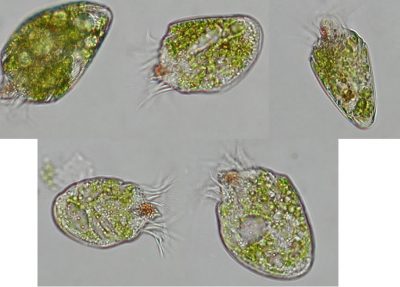 |
Variety of green ciliates collected from tide pools. All of the ciliates are grass-green, indicating possession of chlorophyll-b pigment, and contain an orange-red eyespot. We initially identified them as Strombidium oculatum, a species that has been well-studied by other researchers (see references below). However, DNA sequencing has shown that there are at least a dozen different forms that differ by as much as 16% in the ribosomal ITS region, a level that is much greater than what is found within species in other organisms. Now we are trying to solve a puzzle: How do all of these different forms co-exist in a single tidepool, eating the same food (green algae), without one of them outcompeting the others to extinction, as ecological theory would suggest? Somehow, they partition the habitat in many ways. At this point, we have only been able to cultivate two of the “species”. One of them was new to science, and we named it Strombidium rassoulzadegani; the other is Strombidium apolatum. When we can get more of the forms into cultivation, we hope we can do experiments to help us understand how they are ecologically different. | |
|
||
